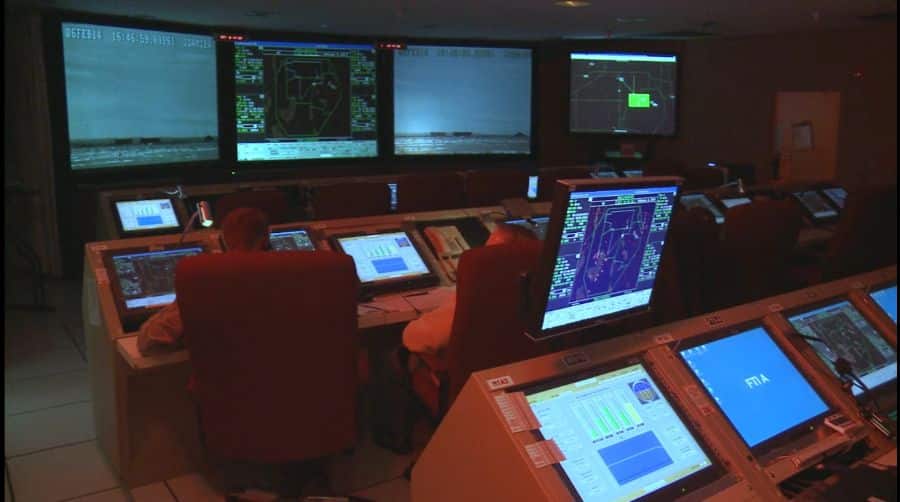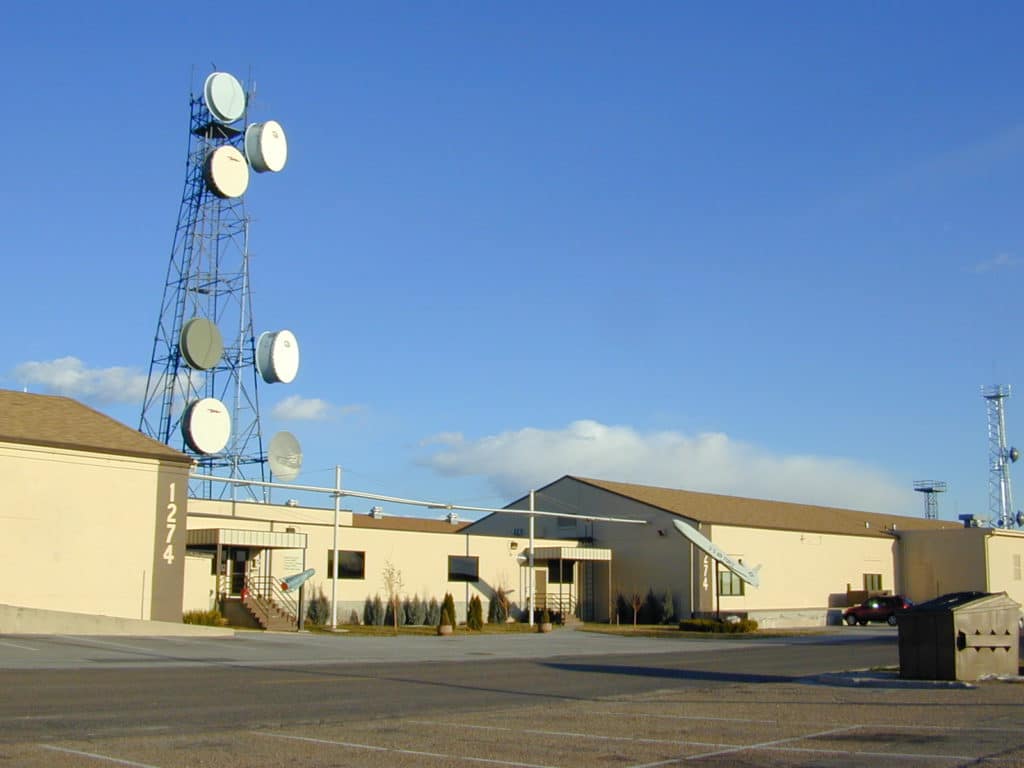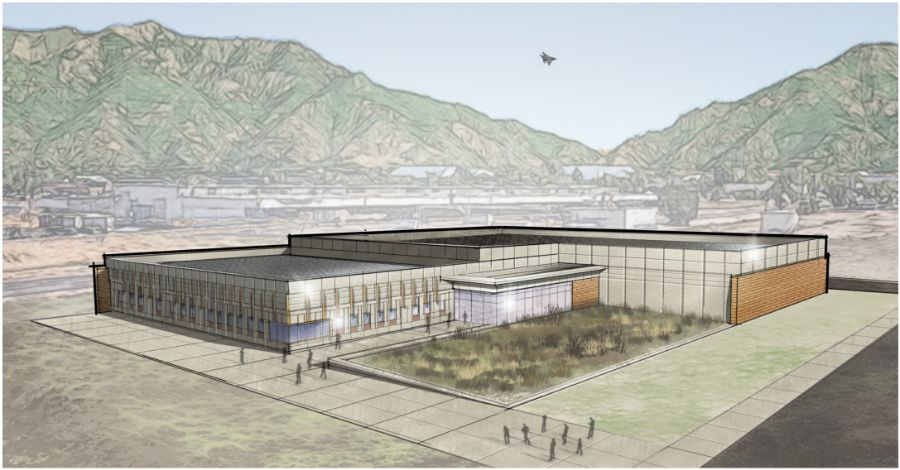JT4 joins the U.S. Air Force and Army Corps of Engineers to design a new state-of-the-art facility at Hill AFB
On March 10, 2021 the U.S. Air Force awarded the contract for construction of the new Consolidated Mission Control Center (CMCC) at Hill AFB in support of the Utah Test and Training Range (UTTR). This $45 million facility will replace the aging Mission Control Center (MCC) in building 1274 and combine additional mission support functions into a single location, a first for the UTTR and a long time in the making.
The existing MCC has a history that predates the UTTR. During World War II, Hill Field, the predecessor of Hill AFB, was an integral part of the war effort, providing much-needed repair and supply support for various aircraft. Hill Field became Hill Air Force Base on February 5, 1948, soon after the U.S. Army Air Forces became the United States Air Force. The MCC was commissioned in the late 1970s and opened its doors the same year that Air Force Systems Command assumed control of the Wendover/Hill/Dugway Range complexes and consolidated them under the new designation of the UTTR. Housed in building 1274, a converted World War II warehouse facility that was part of the original Hill Field rail depot, the MCC has been the UTTR hub of test activity for four decades.
Over that span of 40 years, the facility has undergone multiple upgrades and safety-related repairs, many of which required waivers to various Air Force regulations so operations could continue. Unfortunately, these remodels were not a feasible long-term solution. The building has reached capacity and can no longer accommodate the newest technologies or support the increase in customers utilizing the range for testing and training activities—hence, the need and planning for the new CMCC.
Although the initial kickoff meeting to determine requirements and develop layouts for the new facility was held in spring 2018, project discussions had been underway for many years prior. “After more than a decade of planning for a new building to replace World War II warehouse structures, the UTTR will finally make the leap into the 21st century,” says Jeff Snell, JT4 Range Manager at UTTR. “The new, state-of-the-art facility will ensure the UTTR is postured to support the testing of a new generation of weapons and delivery platforms for our nation’s warriors, and JT4 has a tremendous role in ensuring that support is world-class!”
JT4 has already played a tremendous role in the design and development of the CMCC itself. Throughout the course of building design and in support of numerous week-long design/planning charrettes, JT4 provided key subject matter experts (SME) who collaborated with the Air Force and the Army Corps of Engineers to successfully complete the construction plans for the new facility. While the number of JT4 personnel involved shifted throughout the design process, at any one time there were more than a dozen JT4 SMEs actively involved. These included a dedicated CMCC team consisting of Dave Young (Program/Project Manager), Chris Andrus (Systems Engineer/Project Manager) and Ashley Laffoon (CMCC Engineer POC and Video Systems Projects Lead Engineer). It also included installation and engineering expertise from Pete Fletcher (Installation Supervisor), Brad Magnuson (Network and Communications Engineering), Ken Rigley (Telemetry) and several other talented engineers and operations staff.
The design process involved a fair amount of rework to maintain the functionality of the originally proposed building while accommodating potential cuts to the Air Force’s budget. Certain areas of the building became “bid options,” which could remain or be omitted depending on the construction bids received. Thankfully, all bid options were included in the final proposals and are included in the awarded package.
The new CMCC design provides space for a variety of improvements over the current MCC, including the ability to double the size of the primary video display wall, which showcases video for situational awareness during mission support. It will also allow for the upgrade of several systems from outdated analog patch panels to digital switch infrastructures. The building will be slightly over 40,000 square feet, an approximately 30 percent increase in size, and will be located less than two miles from the South Gate of Hill AFB, which makes it easier to navigate to and from the base’s primary point of entry. The location will also provide an optimal line of sight to the range and a beautiful view across the Great Salt Lake. While JT4 had a pivotal role in building design, the heavy lifting is in the technical infrastructure.
At the request of the government, JT4 took on the daunting task of the design and installation of the systems to be housed in the new facility, as well as the upgrade and migration of systems in the current MCC to the new building—all while continuing to operate, maintain and sustain the range complex and ensure no sustained downtimes impact UTTR test and training missions. With a limited budget of $17 million, JT4 is busy mapping out and executing the engineering and technical support necessary to deploy the systems that will make the new facility truly state-of-the-art. Led by Ryan Border (CMCC Program Manager), and supported by the previously mentioned team of SMEs, JT4 is tackling this project head on. JT4 selected and sub-contracted Walker Telecomm, Inc. to provide engineering support services for the technical infrastructure. Walker has a lauded track record of total mission control facility design and installation and provides the needed support that allows JT4 to continue to focus on our core mission to provide world-class support to our nation’s Warfighters, while building new capabilities to meet the global challenges of tomorrow.
Although the CMCC building will not be habitable for several years, the workload has increased at a breakneck pace. Planning and execution for each phase of the new building’s mission support and operations capability are well underway and have already resulted in increased technological advancements in the existing MCC in preparation for the move to the new facility. The Early Operational Capability (EOC) of a single Mission Control Room (MCR) is currently scheduled for early summer 2023, with Full Operational Capability (FOC) currently projected for winter of 2024. JT4’s dedicated staff at the UTTR will continue to provide critical support over the next few years and ensure the Air Force is postured for the next 50 years of test and training missions on the national treasure known as the Utah Test and Training Range.
Featured image: An artist rendition of the new CMCC at UTTR.



